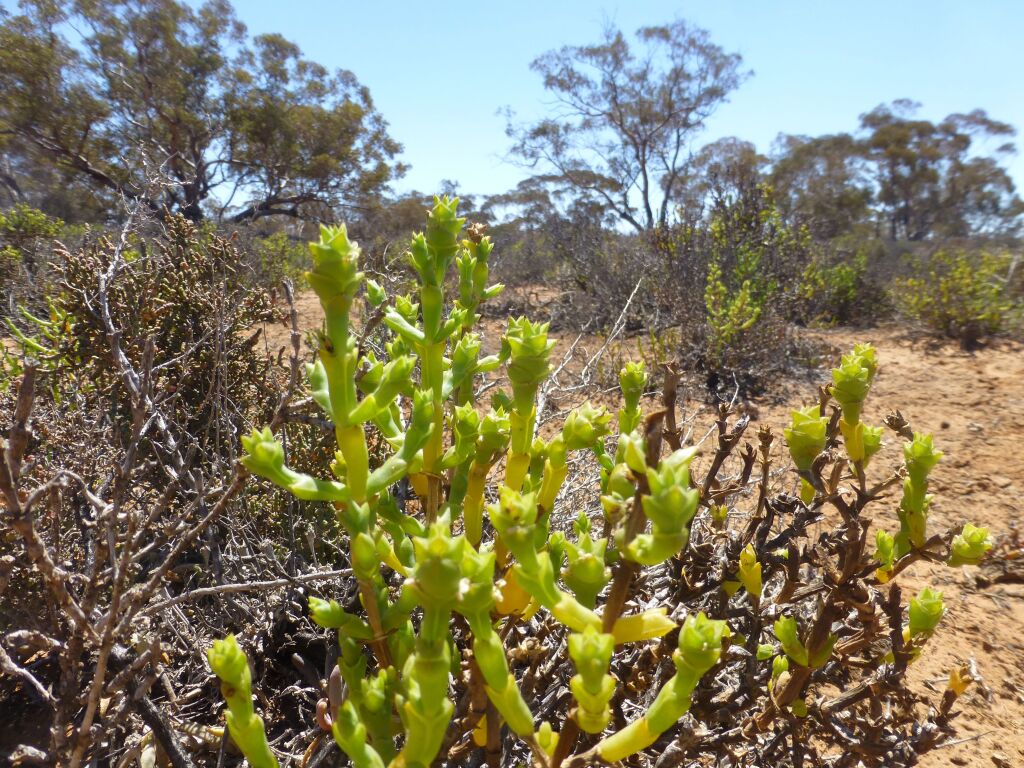Tecticornia
Succulent monoecious, dioecious or rarely gynodioecious, perennial herbs or shrubs, glabrous and apparently leafless, or leaves represented by fleshy spur-like lobes apparently decurrent along internodes and fused along the margins. Young branches segmented, with segments (articles) cylindric to globose, the apex cup-shaped or bilobed. Inflorescence spike-like, usually terminal, with flowers in cymules of (1–)3(–7), in axils of paired, usually fused, fleshy bracts; sometimes only the central flower of each triad bisexual, and the lateral flowers male; perianth segments fused, succulent or membranous; apex acute to truncate; lobes usually 3, 2 lateral, the third lobe abaxial or absent; stamen 1; stigmas 2, rarely 3. Fruiting perianth membranous, succulent, spongy, pithy or hard; falling from axis at maturity or persisting; pericarp membranous to hard, sometimes fused with fruiting perianth; seed ovate to circular, testa membranous or thin and often crustaceous.
A genus of c. 44 species, all endemic to Australia.
Molecular and morphological studies have found no support for the distinction of the previously recognised genera Halosarcia Paul G.Wilson, Pachycornia Hook.f., Sclerostegia Paul G.Wilson and Tegicornia Paul G.Wilson. Molecular data suggests that the 3 smaller genera are paraphyletic within Halosarcia. Consequently, these four genera have been combined into a single genus, Tecticornia been the earliest named genus, and therefore having priority (Shepherd & Wilson 2007).
 Spinning
SpinningSynonyms
Shepherd, K.A.; Wilson, P.G. (2007). Incorporation of the Australian genera Halosarcia, Pachycornia, Sclerostegia and Tegicornia into Tecticornia (Salicornioideae, Chenopodiaceae). Australian Systematic Botany 20(4): 319–331.



